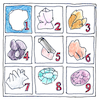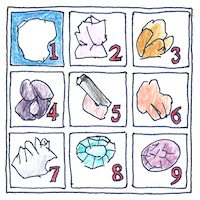Friedrich Mohs
geology

|
Mohs scale
Relative hardness of minerals is easy to determine with a scratch test, a means described by Theophrastus in his treatise On Stones around 300 BCE, but not formalized until 1812 when Friedrich Mohs proposed a non-linear ordinal scale of mineral hardness from 1, represented by talc, to 10, represented by diamond.
Other hardness scales
Thomas Turner and his sclerometer, 1896, Johan August Brinell and his ball indentation tester, 1900, Gabriel Janka and his ball hardness test for wood, 1906, Eugene Meyer and his indentation tester, 1908, Paul Ludwik and his differential depth hardness measurement, 1908, Hugh M. Rockwell and Stanley P. Rockwell using Ludwik’s method, 1914, Albert Ferdinand Shore and his durometer in the 1920s, Raymond R. Ridgway and his extension of Mohs scale, 1933, Charles E. Wooddell and his wear-resistance scale, 1935, Robert L. Smith and George E. Sandland at Vickers Ltd. and their pyramidal diamond indenter, 1921, Frederick Knoop and his microhardness tester, 1939, and Leeb and Brandestini and their rebound hardness test method, 1975, Ernst Schmidt and his hammer for testing concrete, 1975, König and Persoz and their pendulum testers for paint and other coatings introduced scales that were more linear and more useful to industry, but the Mohs scale remains a standard for field geologists.
Cheese scale
“How can you govern a country that has two hundred and forty-six varieties of cheese?” —Charles de Gaulle
A good science project might be to evaluate the relative hardness of cheeses. Industry terms such as “fresh soft” and “fresh firm” “semi-soft” and “semi-hard” are woefully unscientific. Parmesan, cojita, and aged gouda are harder than cheddar, but how hard is dry jack? Is cheddar harder than blue? Is Swiss harder than Gruyère? Is goat harder than sheep? How does hardness affect melting temperature? Does Stilton have a standard hardness? Does hardness correlate with reduced moisture content? And what about fat? Many questions remain and I won’t do the research because I’m allergic to cheese.



I have known about the Mohs scale since college, but have never before been introduced to other hardness scales and measuring devices. Here is where common knowledge diverges from technical knowledge. Reading about hardness testing technology affirms my feeling that spending a modest amount of time studying a subject can qualify a normal person as an expert.
See also in The book of science:
Readings in wikipedia: